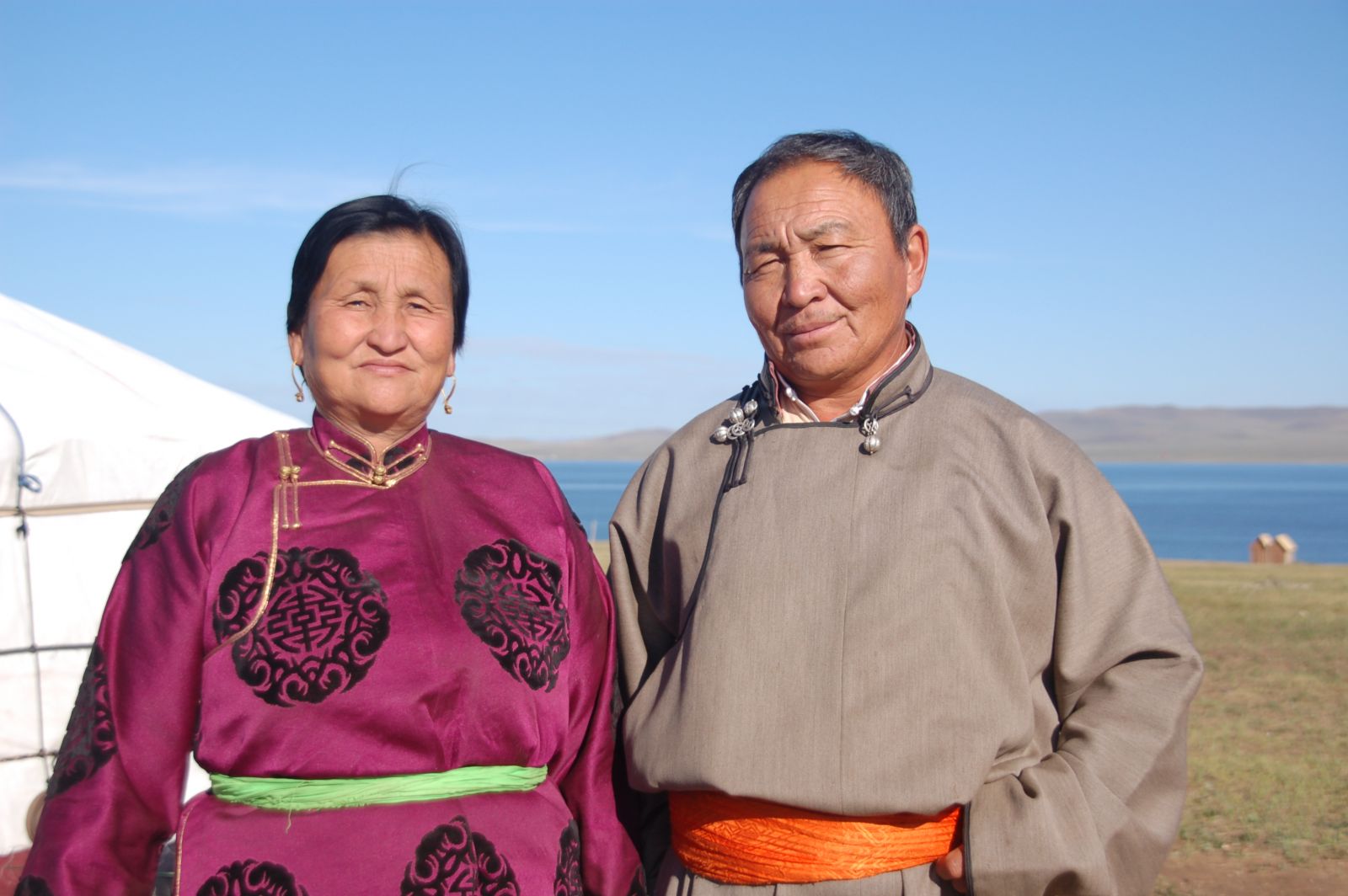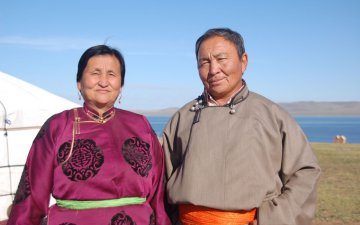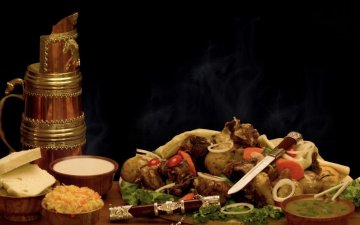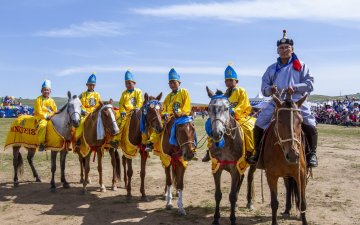The traditional mongolian outfit, or Deel, is primarily practical. It warms a horse rider’s back and the long coat protects the rider’s legs and knees from the cold. It is tied with a long silk girdle, which strengthens the stomach and protects the body’s innards from constant jolts. The doubled cloth of the chest creates a large pocket, and the long sleeves cover and protect the hands up to the tips of the fingers. The winter deel is usually underlaid with fur , while summer ones are thinner, most likely made of leather and rough canvas in earlier times.
National clothes deel is an item of traditional clothing commonly worn since centuries ago among the Mongols and other nomadic tribes of Central Asia and can be made from cotton, silk, wool, or brocade. The Deel is still commonly worn by both men and women outside major towns, especially by herders.
Deel design varies to a certain degree among cultures and ethnic groups, and has varied across time periods. There are even distinct variations among different Mongol tribes mostly on the design of the upper chest opening edges. For instance, the Khalkha Mongol deel opening edges are round, while a Buryat deel's is square. It can also vary among other tribes such as Chakhar, Torguud, and Uzemchin. Deels are designed for different occasions and environments. The design also varies due to function. There are deels for ceremonies like weddings and holidays and deels for daily wear. Deels for special occasions have their outer layer made of silk while the common deels are usually made of wool, cotton and other relatively inexpensive materials.
New articles
9 Reasons to Travel to Mongolia
- It's the home of living nomadic culture
- The vast, untouched steppe
Deel (traditional clothing)
The traditional mongolian outfit, or Deel, is primarily practical. It warms a horse rider’s back and the long coat protects the rider’s legs and knees from the cold.
Mongolian Food and Beverages
Mongolian food is certainly not very well known. High in meat and flour, and with lots of added dairy products.
Traditional Naadam Festival
Mongolians used to organize Naadam festivals to celebrate rituals such as holding a great Khuraldai (meeting of rulers), enthroning a king, worshiping the sky or going to war.




